Laboratories in Department of General Education
- Laboratory of Geology - Prof. Yasutaka TANI
- Semiconductor Device Physics Laboratory - Prof. Akira FUJIMOTO
- Laboratory of Nuclear Physics - Prof. Takayuki MYO
- Biology Lab - Associate Prof. Masako MITSUHASHI
- Laboratory of Ultrafast Photophysics - Assistant Prof. Takayuki HASEGAWA
- Laboratory of Gravitational Physics - Assistant Prof. Masato NOZAWA
- Laboratory of Quark-Hadron Physics - Assistant Prof. Akihiko MONNAI
Laboratory of Geology
Prof. Yasutaka TANI
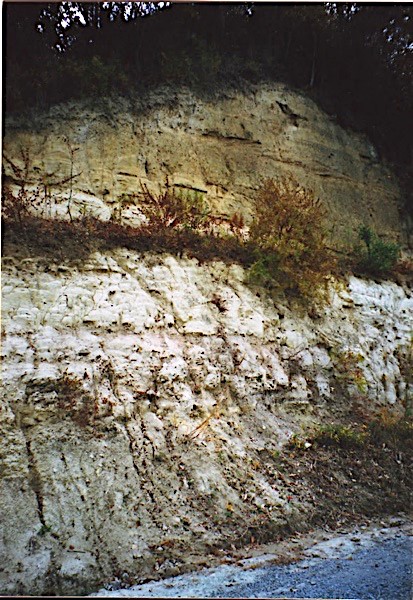
The Paleogene Kobe Group distributed in the Sanda Basin in southwest Japan is composed mainly of non-marine sedimentary rocks, such as sandstone, mudstone and conglomerate. Although more than nine tuff layers are also interlayered in the Kobe Group, the correlation of the tuff layers is still indistinct. In this study, detailed a lithostratigraphic survey is carried out to clarify the precise correlation of the tuff layers. Analyses of the mineral compositions and chemical characteristics of plagioclase, biotite, and amphibole are used to discuss the effectiveness of petrographic analysis for discrimination of the tuff layers in the Kobe Group. The results of this study will contribute to further studies seeking to determine the source vent of the Kobe Group tuff layers.
Main Research Topic
- Litho-stratigraphic and petrographic study on the tuff layers in the Paleogene Kobe Group, southwest Japan.
Semiconductor Device Physics Laboratory
Prof. Akira FUJIMOTO
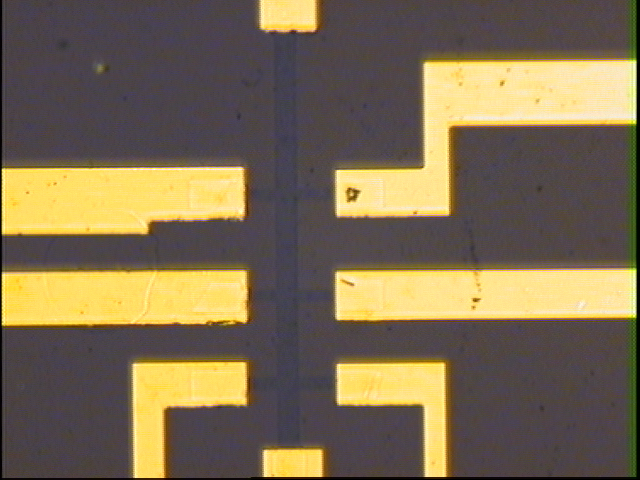
Graphene has high electron mobility and the potential to be a material for next generation devices. We have fabricated graphene field-effect transistors (FET) and studied their quantum transport phenomena. At low temperatures graphene shows quantum Hall plateaus with half-integer steps in magnetic fields. Two-dimensional (2D) material such as graphene has a high surface to volume ratio and is suitable for gas molecule and ion adsorption. To enhance gas detection such as nitrogen dioxide, we have designed van der Waals heterostructure, in which various 2D materials are stacked on top of each other. We are performing gas detection using graphene/molybdenum disulfide heterostructure. Furthermore, we have studied nitrate ion sensing using Si FET with extended gate which consists of 2D materials. Our laboratory has developed next-generation semiconductor devices for safety and security of life.
Main Research Topics
- Quantum transport phenomena in semiconductors
- Gas and ion sensing applications of two-dimensional materials such as graphene
Laboratory of Nuclear Physics
Prof. Takayuki MYO
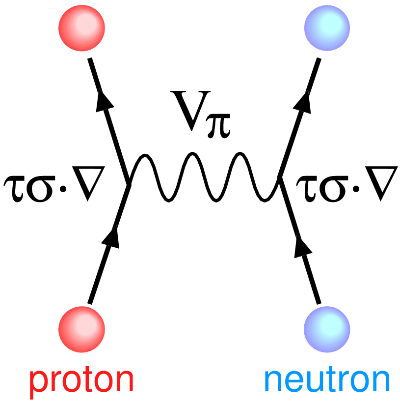
Atomic nuclei are the many-body systems consisting of protons and neutrons and make the elements of the universe. We investigate the variety of the structures of nuclei by solving the motion of protons and neutrons from the view point of the nuclear force. The nuclear force acts attractively between proton and neutron and makes a nucleus bound. This force is explained by Dr. Hideki Yukawa, the first Japanese who received the Nobel Prize. Yukawa’s nuclear force is essential to build all nuclei in the universe. However, the theoretical treatment of this force in nuclei is still difficult and challenging. The aim of our research is to understand the nuclei from Yukawa’s nuclear force using the new many-body theory. The key of our theory is that we adopt the favorable configurations of nuclei, which describe the effect of nuclear force between the constituents at the maximum.
Main Research Topics
- Many-body correlations induced by nuclear force in the nuclear structure
- Nuclear resonances in proton-rich and neutron-rich nuclei
Biology Lab
Associate Prof. Masako MITSUHASHI
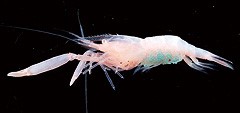
Evolution of a shrimp group, Palaemonoidea
The biodiversity of the various animals and plants living in coral reef habitats is the highest on Earth. One shrimp group living in coral reefs, subfamily Pontoniinae (family Palaemonidae), has over 500 species. Many species of these shrimp are associated with various invertebrate animals such as Porifera, Coelenterata, Mollusca, Echinodermata, and Chordata. The shrimp, especially those with commensal habits, are morphologically diverse and may have adapted to associate with various host animals. Recently, using DNA sequence data and morphology, our phylogenetic research revealed that Pontoniinae species evolved from several different lineages. We are trying to understand the evolution of these shrimp, including the deep-sea species and many other species of the superfamily Palaemonoidea, and are analyzing their phylogeny.
Laboratory of Ultrafast Photophysics
Assistant Prof. Takayuki HASEGAWA
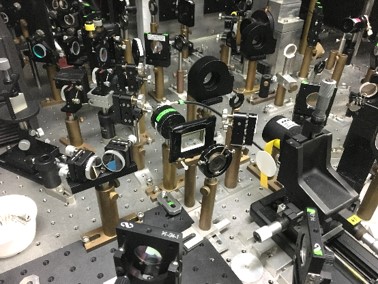
The research interests are ultrafast transient phenomena of electrons and phonons excited by femtosecond laser pulses in semiconductor nanostructures. A variety of ultrafast spectroscopic techniques are used to observe the dynamics in a sub-picosecond time scale. We aim to elucidate novel ultrafast dynamics and to develop terahertz electromagnetic wave emitters.
Main Research Topics
- Terahertz electromagnetic wave emissions from sub-picosecond transient phenomena in semiconductor nanostructures
- High-sensitivity characterization of semiconductor nanostructures by modulation spectroscopy
Laboratory of Gravitational Physics
Assistant Prof. Masato NOZAWA
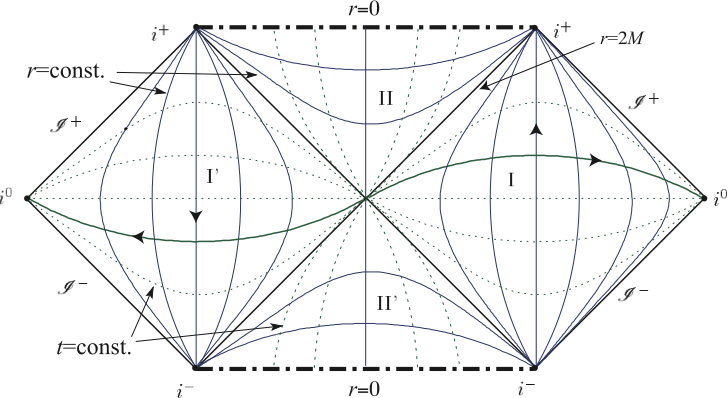
Gravity is the most familiar force in nature and is described at an incredibly precise level by Einstein’s theory of general relativity. Our research is focused on the mathematical structure of general theory of relativity and its generalizations.
Main Research Topics
- Black holes:
Black holes are one of the most interesting stellar objects predicted by general relativity. Many aspects of gravity are essentially encoded into the geometry of black holes. We are trying to classify black hole solutions and explore physical process of black hole. - Supergravity:
The most promising candidate of unified theory of particle interactions is string theory. String theory is formulated in higher dimensional spacetimes and reduces to supergravity theories in low energy limit. Our group is trying to uncover various symmetries of supergravity theories in diverse dimensions. Our scope of research also includes the hunting of (A)dS vacua and applications to the accelerating universe.
Laboratory of Quark-Hadron Physics
Assistant Prof. Akihiko MONNAI
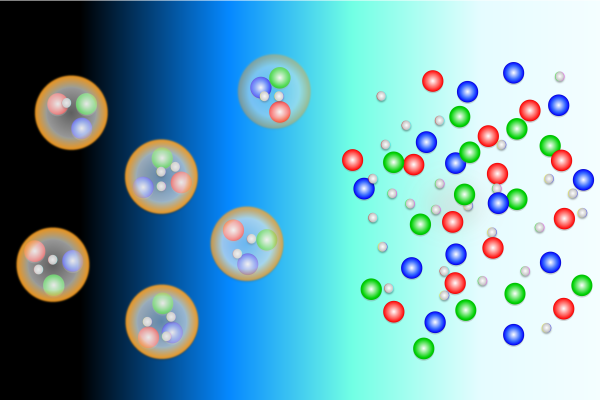
Quarks are fundamental building blocks of matter. They are confined to protons and neutrons inside atomic nuclei at ordinary temperatures and pressures. At temperatures above 2 trillion degrees, quarks become deconfined and form the quark-gluon plasma (QGP), a many-body system of elementary particles. The QGP is thought to have filled the universe shortly after the Big Bang and can now be produced in high-energy nuclear collisions. We aim to theoretically elucidate the physics of the QGP by constructing phenomenological models and performing analytic calculations and numerical simulations.
Main Research Topics
- Quark-gluon plasma in nuclear collisions
- Relativistic dissipative hydrodynamics